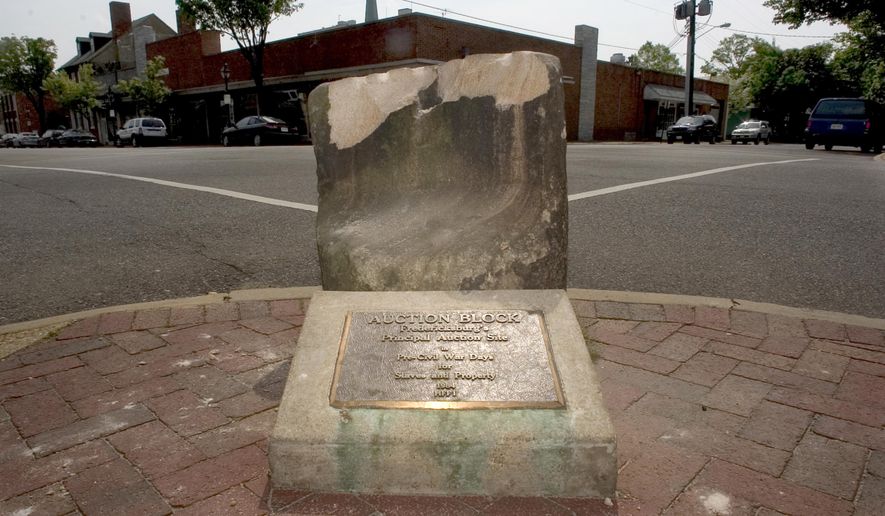An auction block where slaves were bought and sold in nineteenth-century Virginia was removed Friday from a street corner in the city of Fredericksburg to be put in a museum.
The roughly 800-pound artifact had stood for ages near the intersection of William and Charles Streets in downtown Fredericksburg, around 50 miles south of Washington, D.C., and since 1984 it had been accompanied by a plaque noting its place as the city’s “Principal Auction Site in Pre-Civil War Days for Slaves and Property.”
Fredericksburg City Councilor Charlie Frye pushed to remove the block in 2017 following the infamous “Unite the Right” rally held that summer in nearby Charlottesville, and within two years the City Council had voted to relocate it to the nearby Fredericksburg Area Museum.
Legal obstacles prevented the city from removing the auction block until April 1, however, and by then Virginia was under a state of emergency due to the novel coronavirus pandemic and its relocation was put on hold.
Fredericksburg had intended to relocate the auction block as soon as Friday, which marked the start of the second phase of the state’s tiered plan for reopening after the pandemic shuttered operations across Virginia and the world.
City Manager Tim Baroody acknowledged that the block’s removal had a least a little to do with it being vandalized no fewer than two times in the preceding days amid nationwide unrest sparked by the racially charged killing last month of George Floyd in Minneapolis, Minnesota.
“The graffiti and all that had an impact on the decision [to remove the stone Friday], but I’d say, most importantly, we’re making good on direction City Council gave to me late last year,” said Mr. Baroody, The Free Lance-Star reported.
“As the only minority on City Council, I felt the weight of the world on my shoulders,” Mr. Frye, the city councilor, said in a statement. “The people of the City never walked away from the table, never stopped talking to each other. This was huge – and it felt great because I came from ancestors who were never heard.
The “Unite the Right” rally in 2017 was organized in opposition to the planned removal of a Confederate monument in Charlottesville that still remains standing. Its participants included members of white nationalist groups, and an attendee notoriously drove into a crowd of counterprotesters, killing one.
Floyd, a black man, was killed May 25 while in the custody of the Minneapolis Police Department, sparking nationwide protests against racism and police brutality in the days since.
Several longstanding monuments and statues with slavery and white supremacy have been vandalized with graffiti amid the unrest. Some have abruptly disappeared due to city action as well, including the auction block in Fredericksburg in addition to a 120-year-old Confederate monument that was removed without warning this week from a park in Mobile, Alabama, among others.
• Andrew Blake can be reached at ablake@washingtontimes.com.




Please read our comment policy before commenting.